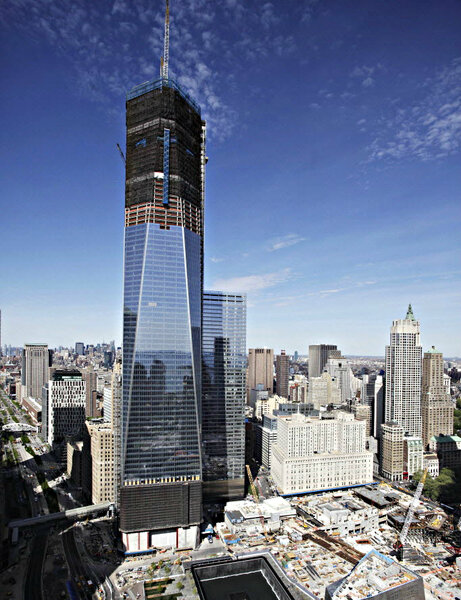Though unfinished, One World Trade Center, more simply referred to as 1 WTC and previously, the Freedom Tower, is surpassing the height of the Empire State Building as of April 30 to lay claim to the title of New York City’s tallest skyscraper, standing just a little over 1,250 feet.
The signature skyscraper under construction at Ground Zero in New York is being built by the Port Authority of New York and New Jersey, the regional transportation agency that owns the 16-acre World Trade Center site where the original eight-story 6 World Trade Center once stood.
The skyscraper has 104 stories and, at the time of its expected completion in 2013, will be the tallest building in the Western Hemisphere and the third-tallest building in the world, reaching a symbolic 1,776 feet, in reference to the year of American independence.
But while nowhere near the tallest building in the world just yet, One World Trade Center is by far the world’s most expensive new tower, with a price tag that has risen to more than $3.8 billion, according to early 2012 reports. By comparison, the developer of the world’s tallest tower, the Burj Khalifa in Dubai, estimated costs at $1.5 billion.





